The Riding Technique Only Expert Riders Understand
I can go through the exact same corner a thousand times, and it will be slightly different each and every time. Maybe the wind pushed me into it a little wider, a little faster.
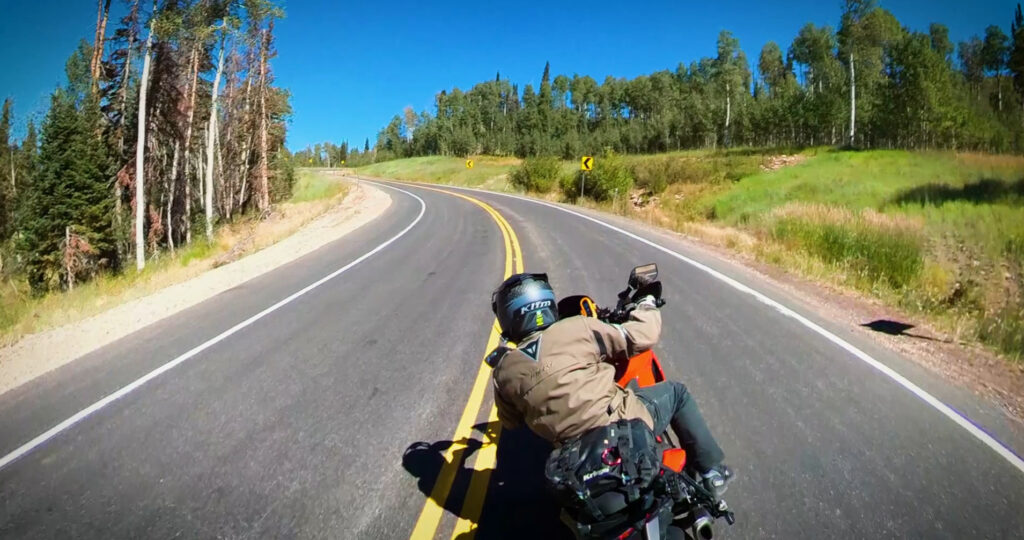
Maybe my tires are fresh and grippy or worn and tired. It’s hot, it’s cold, there’s a layer of debris from a recent rain shower. I have a full tank of gas, or it’s nearly empty.
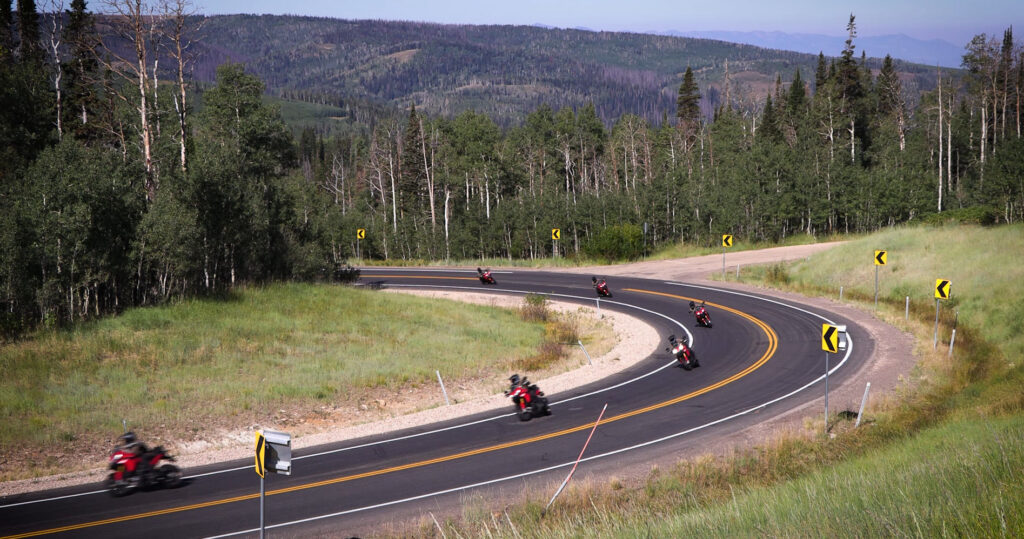
Even on the race track, what many call a controlled environment – except we can’t control all that much. Maybe I drafted another rider, or there’s a rider on my line and I have to use a different one.
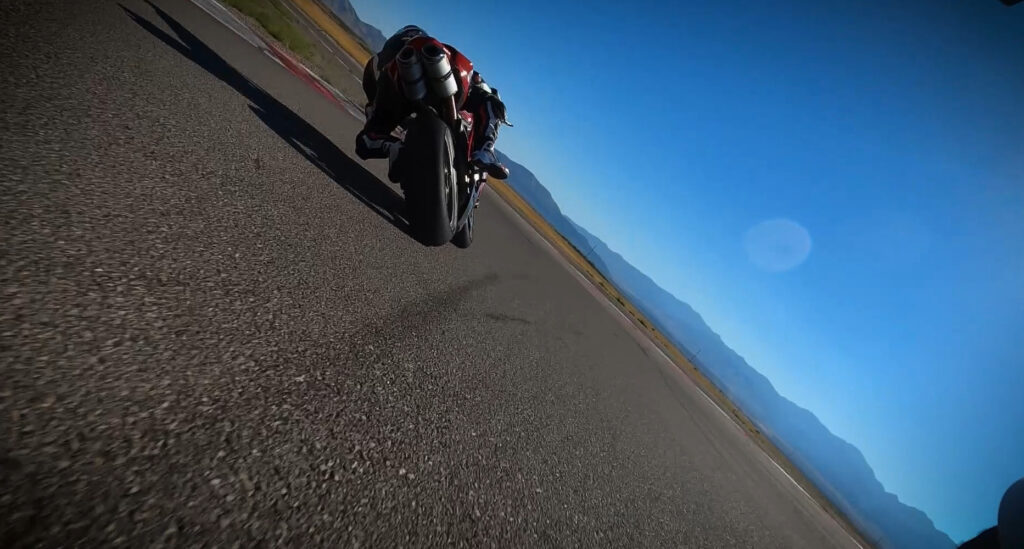
It’s nine corners repeating themselves, but maybe since the last lap a rider went off track and now there’s a tuft of gravel near the apex. It’s the exact same corner that’s never quite the same. So may “controlled environment” isn’t as accurate as, say, “closed course.”
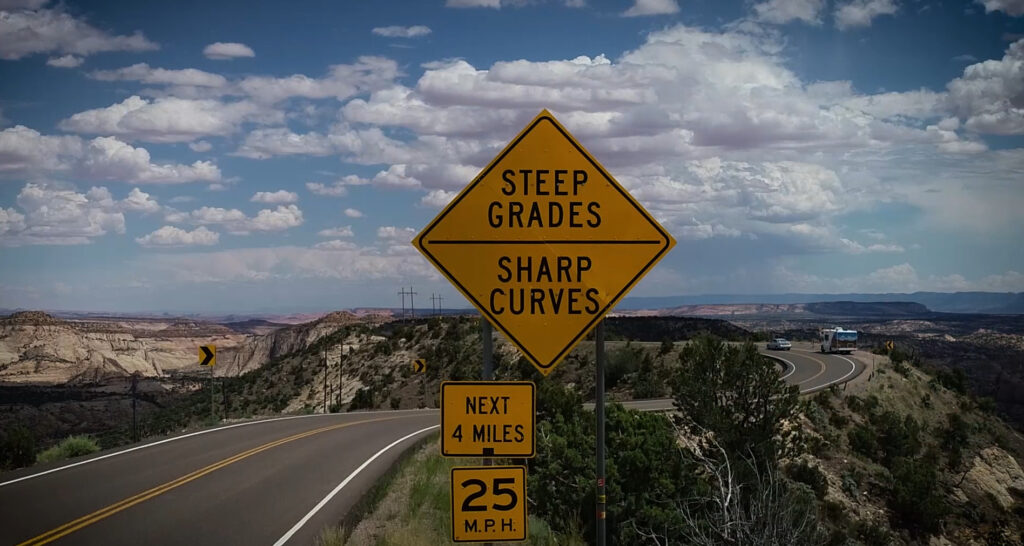
Back into the real world, no two mountains or canyons are the same. So now we add in the randomness of corners themselves. All with a different slope, radius and infinite variations in the surface. Every corner will be different every time.

Nature never repeats itself. It’s a fundamental law of the universe, yet it doesn’t show up in the laws of Physics: no two stones are identical, no two leaves are identical. There are billions of stars in the sky but there is no geometry. How is it the laws of physics produce a natural world that never repeats itself.
So then why do we try to apply regimented sequences based on our location within a corner to solve constantly changing problems?
Listen, riding based on corner location isn’t as good as riding the bike by direction. So, what do I mean by that? When I took the online Champ U courses, this clip almost made me cheer out loud.
We’re going to ride the bike based on direction not based on where it is on the race track. We’re not going to go to the brakes there, and turn in here, and use the brakes till this one point. That’s not how we ride. We don’t ride by rote. We’re riding the bike based on direction. Whatever is changing in our sport, there’s always things that are changing, we control our speed based on direction and we get the bike pointed no matter what.
Kyle Wyman – Yamaha Champions Riding School
Nature never repeats itself. Those fixed points; riding by rote can work in a perfect scenario; But how often are we Perfect?
It may be perfect this time, but will they even work next time, when everything is slightly different? …
Just like doing all our braking and then accelerating through the entire corner is problematic in a lot of situations, so is doing the regimented slow until the apex idea.
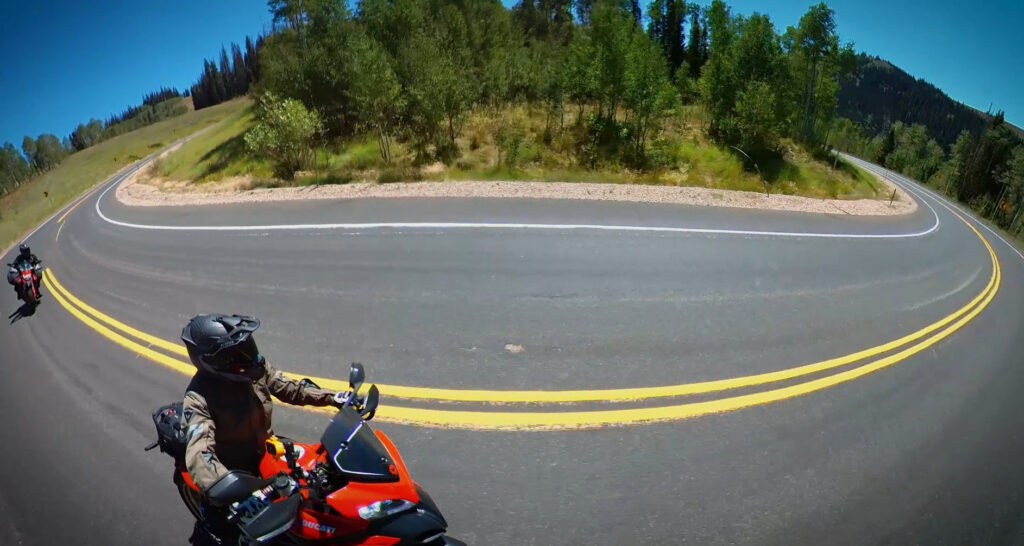
It absolutely matters where we physically are in a corner but we are better served when we make decisions based on where the bike is pointed; it’s better when we ride by speed and direction and not by sequence.
Listen, here’s what we know. In simplest terms, for a given lean angle, speed equals radius. The faster we go, the bigger the circle. We also know that the slower we go, the smaller the circle.
We know that the front brake makes the bike slow and turn. It’s how motorcycles are designed and engineered to work. We know that with acceleration the bike stops turning and wants to run wide, unless we add more lean angle, which subsequently adds more risk, and lean angle isn’t infinite. We may not have grip or clearance or comfort to just lean more.
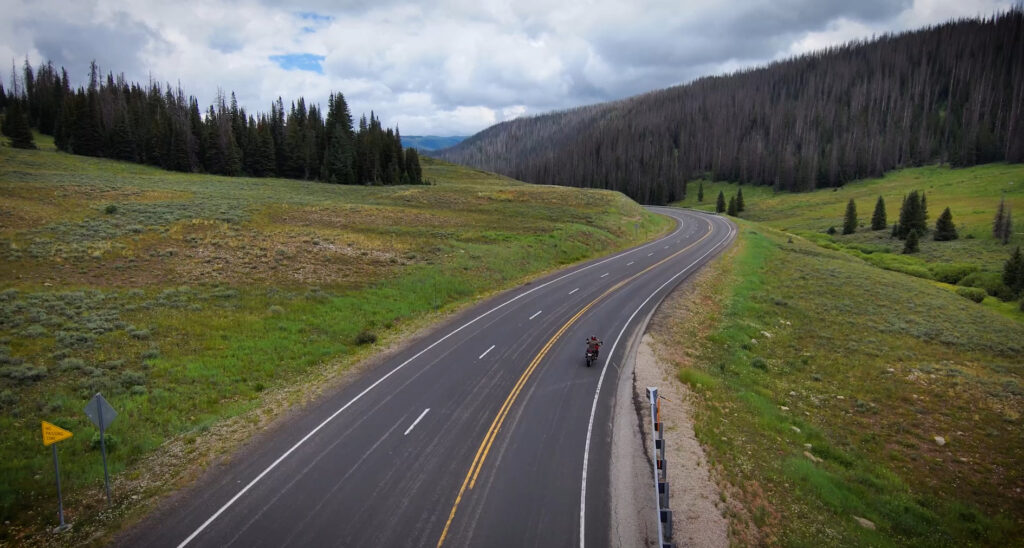
Since every corner is a constantly changing puzzle that we need to solve in real time, riding the motorcycle by direction means: slowing makes the radius decrease, a steady speed, maintenance throttle, the radius stays the same. Acceleration, the radius increases. Cool?
Think of it like this. We need to have weight over a tire, before that tire has grip. If we’re accelerating, or even maintaining our speed, where is our weight? Not on the front tire. Which tire do we need for turning and for slowing? The front tire. By using our front brake into turns, we are putting weight where we need it to be, on the front tire, in case we need to slow more for something unexpected. Animals, slow traffic, oncoming car in our lane, whatever. But we are also manipulating the bikes geometry, telling the bike we want to slow and turn.
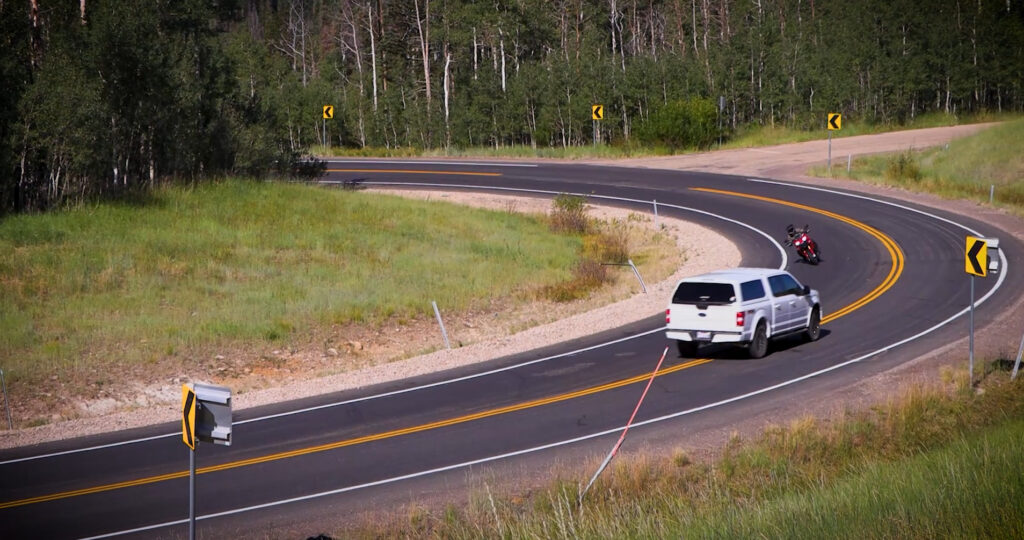
If it’s a long sweeping corner and we’re happy with our speed and direction, the bike is pointed through the corner the way we want, and we have good visibility, we may very well want to go to maintenance throttle – maintain our speed, maintain our radius. We always cover the front brake so if we need to slow again, we simply go off the throttle and ease back into the front brake.
If the corner gets tighter, we simply go off the throttle and ease back into the front brake and our line, our radius will get smaller. Remember, smooth, linear inputs. Wait for the weight to go to the tire.
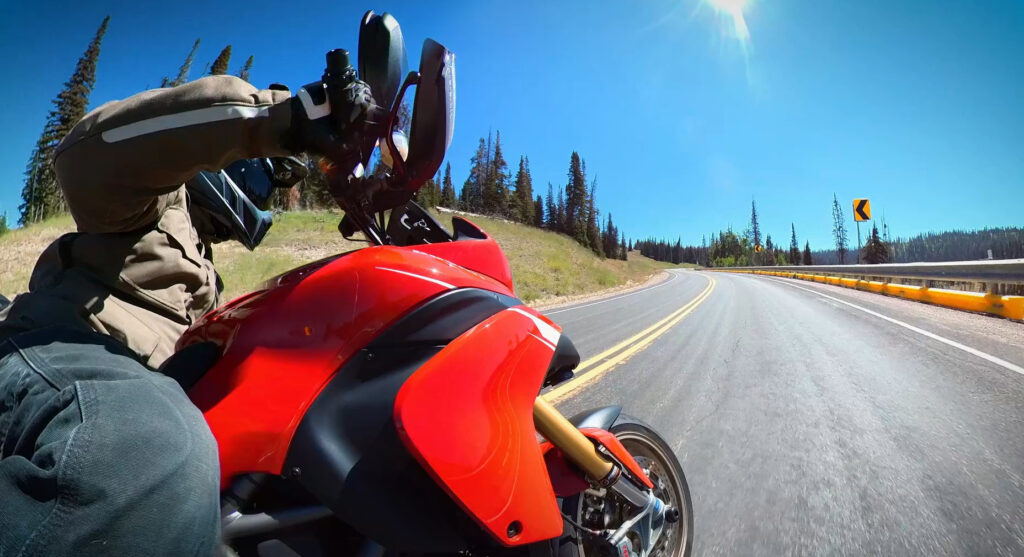
Now we’re reaching the end of our corner. When we can see the road open up into a straightaway. The corner is ending, and we can see our exit and we can take away lean angle, this is when we can begin to actively accelerate. What’s going to happen when we start adding speed? The bike is going to stop turning and want to run wide, right. Exactly what we want the bike to do at this point in the corner.
But keep in mind, grip comes from weight, so we want to roll on the throttle in a smooth, linear way and allow the weight to shift back onto the rear tire before we ask it to work.
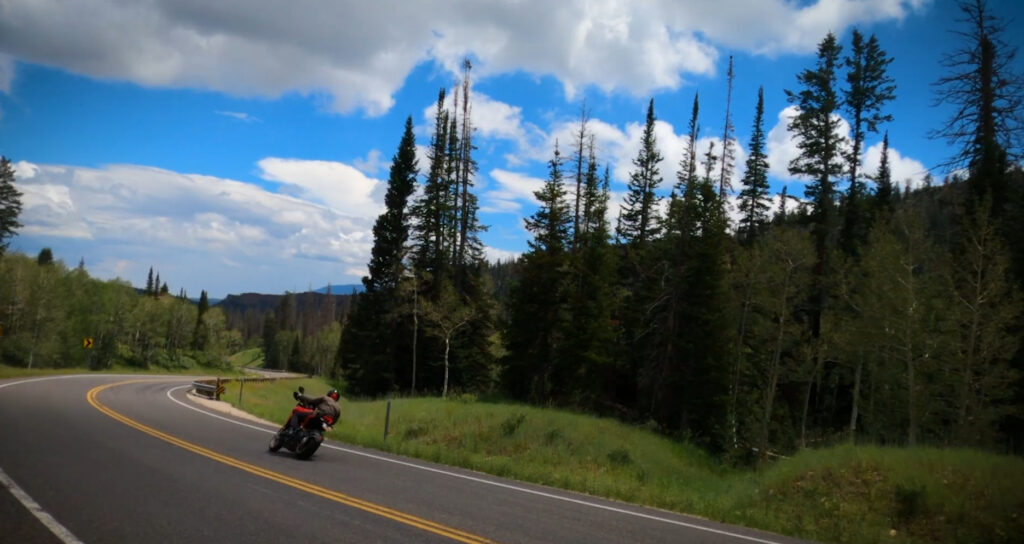
So what do we need to be careful of? First, and foremost is impatience. Most of us are eager to turn on the go-fast. So we struggle with going back to the throttle too soon and too quickly. Most of us will struggle with giving up on the front brake too soon or too quickly. We are riding the bike based on direction so we need to be patient. Let the motorcycle turn. Get direction! Then, when we get to the point where we can take away lean and see our exit;
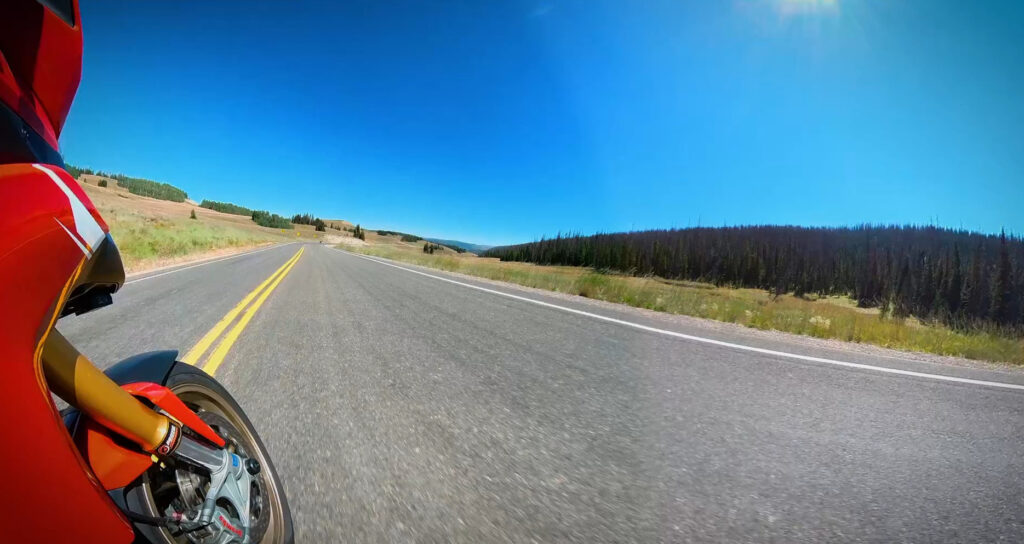
we can see that straightaway extending out in front of us, beckoning out to us, the bike eager to stretch its legs and breathe deep; remember, we are riding by direction. Get the bike turned, get direction, and then we can let ‘er run!
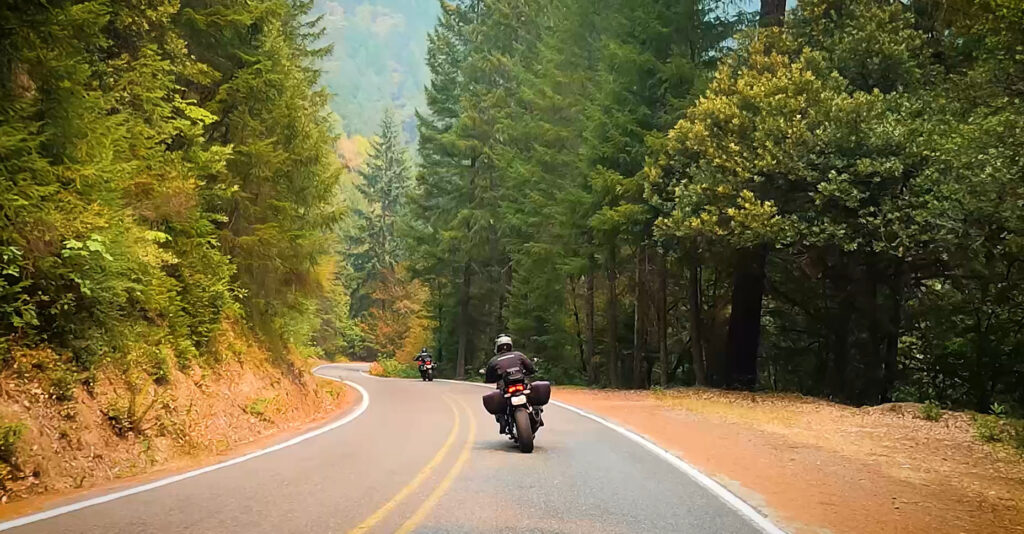
The whole idea is we no longer ride a bike hoping. Emotionally hoping. We ride it technically. As we approach the corner, we roll off to the brake lever, use the brakes into the corner until the bike is pointed in the right direction. When we’re happy with the speed and direction come off the brakes, we go to neutral or maintenance throttle. Our radius holds until we can see the exit and take away lean angle. Next corner, do the same thing.
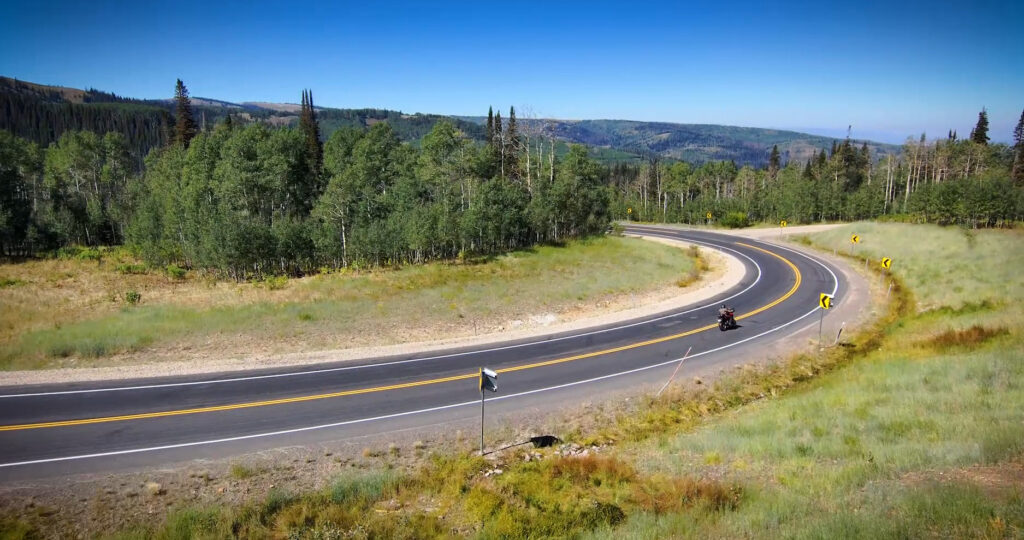
The front brake makes the bike want to slow down and turn, neutral or maintenance throttle, the bikes radius stays the same. Acceleration makes the bike stop turning and want to run wide. Use the control we need in the moment to do what we need the bike to do. Nature never repeats itself. We want to use strategies that account for and accommodate all that variability. We ride the bike based on direction.
Sources
- Sport Riding Techniques: https://amzn.to/2I421VL
- Motorcycle Dynamics: https://amzn.to/2MCuYvK
- Yamaha Champions Riding School
- Engineers Edge
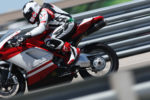
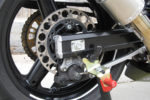
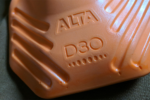
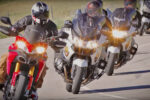
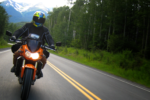
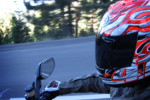
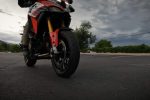
First time reader on your site, but using the term ‘Trail Braking’ as the skill used for applying brakes approaching a corner into the corners apex may help readers understand a bit a better! My favourite part of racing road bikes, trail braking hard into a corner with the back wheel in the air